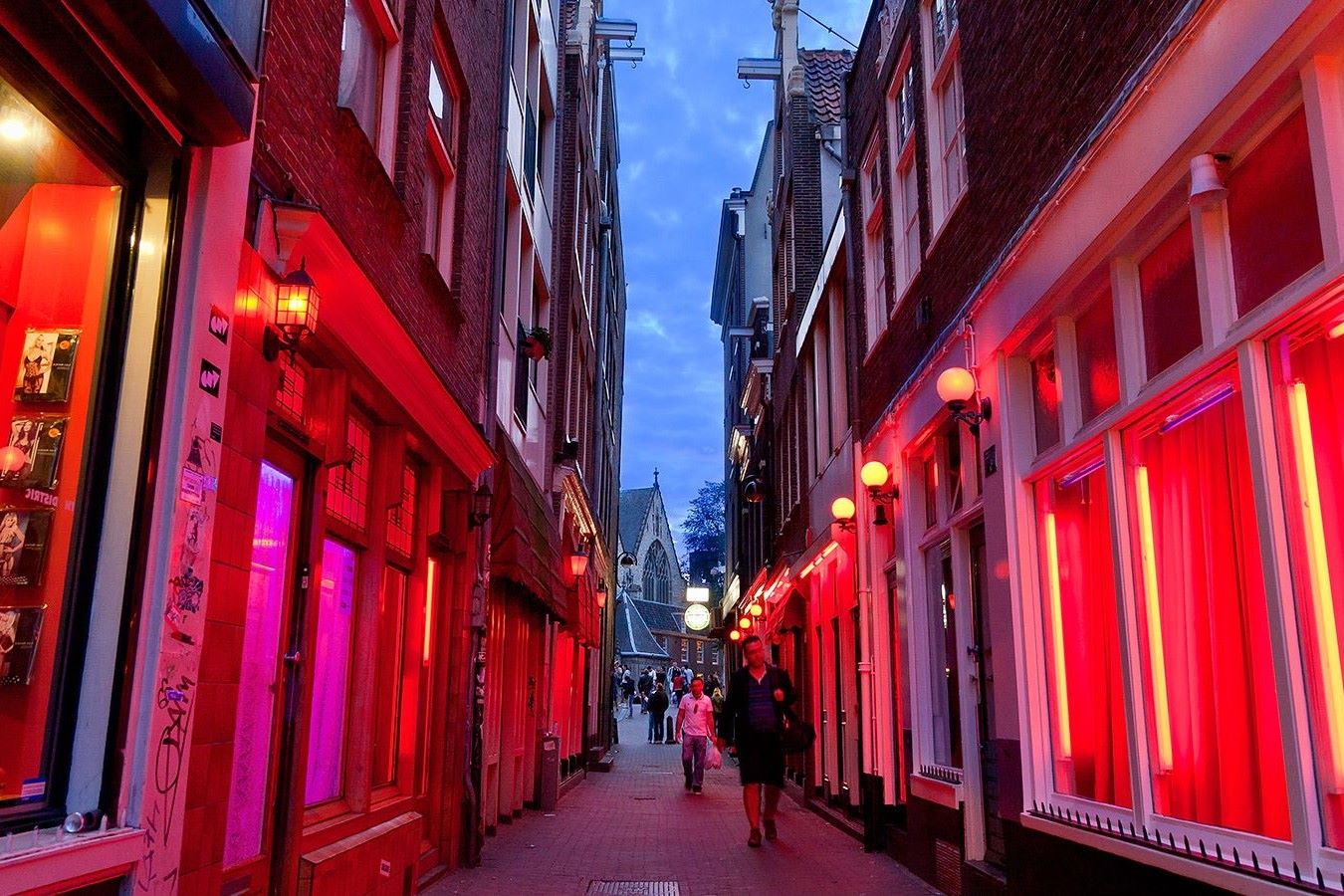
Red Light Districts have always sparked curiosity and intrigue. These areas, often found in major cities, are known for their vibrant nightlife, adult entertainment, and unique history. But what exactly makes them so fascinating? Red Light Districts are not just about neon lights and nightlife; they are cultural hubs with rich stories and diverse communities. From the famous De Wallen in Amsterdam to Kabukicho in Tokyo, each district has its own character and charm. Whether you're interested in the history, the laws, or the people who live and work there, there's always something new to learn. Let's dive into 34 intriguing facts that will give you a deeper understanding of these captivating areas.
Key Takeaways:
- Red light districts are areas known for adult entertainment, with a unique history and culture. They can have a significant economic impact, but also face challenges such as human trafficking and social stigma.
- Red light districts are evolving with changing societal attitudes and technology. They are also popular tourist attractions, offering unique experiences and cultural insights.
What is a Red Light District?
Red light districts are areas in cities known for their concentration of adult entertainment venues, including sex shops, strip clubs, and brothels. These districts often have a unique history and culture.
-
The term "red light district" originated from the red lanterns used by railway workers in the 19th century to signal trains, which were later adopted by brothels to indicate their services.
-
Amsterdam's De Wallen is one of the most famous red light districts globally, attracting millions of tourists each year.
-
In many countries, red light districts are regulated to ensure the safety and health of sex workers.
Historical Background of Red Light Districts
Red light districts have a rich history that dates back centuries. These areas have evolved over time, reflecting changes in societal attitudes and laws.
-
The ancient city of Pompeii had a designated area for prostitution, complete with erotic frescoes.
-
In medieval Europe, red light districts were often located near ports, catering to sailors and travelers.
-
During the Gold Rush in the United States, red light districts sprang up in mining towns to serve the influx of workers.
Legal Aspects of Red Light Districts
The legality of red light districts varies widely around the world. Some countries have legalized and regulated prostitution, while others have strict laws against it.
-
In the Netherlands, prostitution is legal and regulated, with sex workers required to register and undergo regular health checks.
-
In contrast, prostitution is illegal in most parts of the United States, except for some counties in Nevada.
-
Germany has one of the most liberal prostitution laws in Europe, with sex work being fully legalized and regulated.
Economic Impact of Red Light Districts
Red light districts can have a significant economic impact on their surrounding areas, contributing to tourism and local businesses.
-
Amsterdam's red light district generates millions of euros in tourism revenue each year.
-
In Thailand, the red light district of Patpong is a major tourist attraction, contributing to the local economy.
-
Legalized red light districts can reduce illegal activities and increase tax revenues for governments.
Social and Cultural Aspects of Red Light Districts
Red light districts are often vibrant areas with a unique social and cultural atmosphere. They can be controversial but also fascinating.
-
The Moulin Rouge in Paris, located in the city's red light district, is famous for its cabaret shows and has become a cultural icon.
-
In Japan, the Yoshiwara district in Tokyo was historically known for its courtesans and has been depicted in various forms of art and literature.
-
Red light districts often have a mix of adult entertainment venues, restaurants, and bars, creating a lively nightlife scene.
Safety and Health in Red Light Districts
Ensuring the safety and health of sex workers is a critical concern in red light districts. Various measures are taken to protect them.
-
In Amsterdam, sex workers have access to health services and legal protection, reducing the risk of exploitation.
-
Germany's regulations require brothels to provide safe working conditions and regular health checks for sex workers.
-
In some countries, NGOs work to provide support and resources to sex workers in red light districts.
Controversies and Challenges
Red light districts are often the subject of controversy and face various challenges, including legal issues and social stigma.
-
Gentrification can threaten the existence of red light districts, as seen in Amsterdam, where rising property prices are pushing out sex workers.
-
Human trafficking is a significant concern in many red light districts, prompting efforts to combat exploitation.
-
The stigma associated with sex work can lead to discrimination and marginalization of sex workers.
Famous Red Light Districts Around the World
Several red light districts around the world are well-known for their unique characteristics and history.
-
De Wallen in Amsterdam is famous for its window brothels and historic canals.
-
The Reeperbahn in Hamburg, Germany, is known for its nightlife and entertainment venues.
-
Patpong in Bangkok, Thailand, is a bustling area with a mix of go-go bars, nightclubs, and street markets.
Red Light Districts in Popular Culture
Red light districts have been depicted in various forms of popular culture, from movies to literature.
-
The movie "Moulin Rouge!" is set in Paris's famous red light district and showcases its vibrant nightlife.
-
In the video game "The Witcher 3," the city of Novigrad features a red light district with various adult entertainment options.
-
Charles Dickens's novel "Oliver Twist" includes scenes set in London's red light district, highlighting the social issues of the time.
Modern Trends in Red Light Districts
Red light districts are evolving with changing societal attitudes and technological advancements.
-
Virtual reality technology is being used in some red light districts to offer new forms of adult entertainment.
-
Online platforms are increasingly being used by sex workers to connect with clients, reducing the need for physical red light districts.
-
Some red light districts are rebranding themselves as cultural and historical attractions to appeal to a broader audience.
Red Light Districts and Tourism
Tourism plays a significant role in the popularity and economy of red light districts.
-
Guided tours of red light districts, such as those in Amsterdam, offer tourists a glimpse into the history and culture of these areas.
-
Some red light districts have museums and exhibitions that educate visitors about the history of sex work.
-
Nightlife and entertainment options in red light districts attract tourists looking for unique experiences.
-
Efforts to promote responsible tourism in red light districts aim to reduce negative impacts on local communities and sex workers.
Final Thoughts on Red Light Districts
Red light districts have always sparked curiosity and controversy. These areas, often misunderstood, offer a glimpse into the complex world of adult entertainment. From Amsterdam’s famous De Wallen to Bangkok’s Patpong, each district has its own unique history and culture. While some see these areas as hubs of vice, others view them as places of economic opportunity and personal freedom. Understanding the facts about red light districts helps demystify their role in society. Whether you’re intrigued by their history or curious about their present-day operations, it’s clear these districts are more than just neon lights and nightlife. They reflect broader social, economic, and cultural dynamics. So next time you hear about a red light district, remember there’s more beneath the surface than meets the eye.
Frequently Asked Questions
Was this page helpful?
Our commitment to delivering trustworthy and engaging content is at the heart of what we do. Each fact on our site is contributed by real users like you, bringing a wealth of diverse insights and information. To ensure the highest standards of accuracy and reliability, our dedicated editors meticulously review each submission. This process guarantees that the facts we share are not only fascinating but also credible. Trust in our commitment to quality and authenticity as you explore and learn with us.


